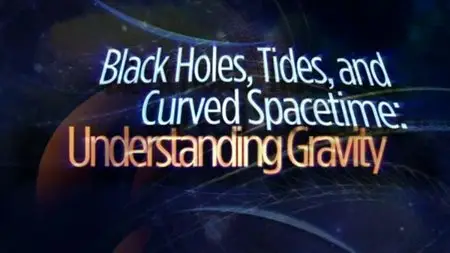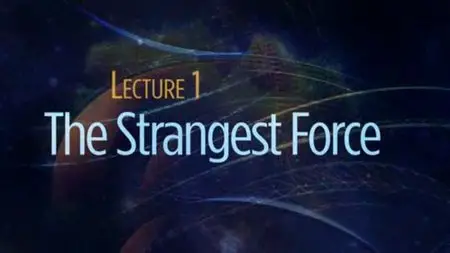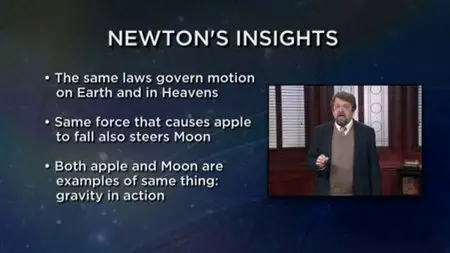Black Holes, Tides, and Curved Spacetime - Understanding Gravity
DVD-Rip | AVC1 @ 1 Mbit/s | 570x320 | AAC Stereo @ 128 Kbit/s 48 KHz | 24x30 min | 5.91 GB
Genre: Physics | Language: English
DVD-Rip | AVC1 @ 1 Mbit/s | 570x320 | AAC Stereo @ 128 Kbit/s 48 KHz | 24x30 min | 5.91 GB
Genre: Physics | Language: English
The force of gravity rules the universe. It governs our everyday lives on Earth and it controls the motions of the heavens above. Yet it is one of the least understood of all the forces of nature. To endeavor to understand this fundamental force is to experience anew something as simple as getting out of bed, throwing a ball, or diving into a pool; and it gives deep insight into the central organizing principle of the cosmos.
Consider these crucial aspects of gravity:
Gravity governs the rising and falling of tides—not only tides in the ocean, but tides in the solid rock of Earth itself.
Gravity molds the sun and planets into spheres, and it holds celestial objects in their orbits.
Gravity ignites the nuclear fires inside each star, then fights a billion-year battle to determine its fate.
Gravity collects stars into galaxies and causes galaxies to collide in intricate mergers that we can model with supercomputers.
Without gravity, everything would dissolve into a gas of randomly interacting atoms. It is the only truly universal force, affecting not just matter but also light, time, and, at a basic level, all information. The study of gravity helped spark the Scientific Revolution in the 17th century, and it continues to be at the forefront of physics today, as scientists rely on gravity to investigate otherwise inaccessible phenomena such as dark matter and dark energy. An understanding of gravity—what it is, how it works, and why it is the most dominant and puzzling force in the universe—is both endlessly fascinating and accessible to any curious person, regardless of his or her science education.
Black Holes, Tides, and Curved Spacetime: Understanding Gravity plunges you into this compelling subject in 24 intensively illustrated half-hour lectures, presented by Professor Benjamin Schumacher of Kenyon College. Professor Schumacher is an award-winning teacher, a prominent theoretical physicist, and a protégé of John Archibald Wheeler, the distinguished gravity theorist who first coined the term “black hole.”
No book or other comparable product exists that presents gravity in such comprehensible detail as this course, which covers the key ideas in gravity research over the past 400 years and gives you the background to understand today’s path-breaking theories in physics. Professor Schumacher even walks you through some of the fundamental equations in the field, such as Isaac Newton’s law of universal gravitation and Albert Einstein’s equation governing the curvature of spacetime by matter, giving you a firsthand look at the power of these mathematical expressions to explain reality—plus further opportunities to explore them with the course guidebook.
It All Started with an Apple
The course opens with Newton’s famous apple, which fell from a tree and inspired a revolutionary idea. Newton realized that the force of gravity that acts on an apple near the surface of Earth also extends to the faraway moon, keeping it in its orbit around Earth; similarly, Earth and the other planets are held in orbit around the sun by its gravity, and so on with all the stars and planets throughout the cosmos.
You learn how Newton built on the earlier work of Galileo Galilei and Johannes Kepler to formulate his celebrated law of universal gravitation, which governs the analysis of practically all motion—on Earth and in the heavens. In the first half of the course, you cover the many implications of this spectacular achievement. In the second half, you see how Einstein’s general theory of relativity solved long-standing mysteries of Newton’s theory and advanced an entirely new picture of gravity as a field. The simple reasoning that led Einstein to his extraordinary conclusions is thrilling to follow in Professor Schumacher’s elegant presentation.
Equally thrilling are the surprising features of gravity that you investigate, including these:
Gravity is unimaginably weak—a million, trillion, trillion, trillion times weaker than the electromagnetic force that attracts electrons to protons and holds atoms together. Which raises the question: How can weak gravity dominate all other forces?
Galileo was the first to point out that objects with different masses fall at the same rate. Neglecting air resistance, a heavier object does not fall faster than a lighter one—a principle famously demonstrated by an astronaut on the moon with a hammer and a feather.
The weightless condition that astronauts experience in space is not because they are beyond the reach of gravity, which is almost as strong in low Earth orbit as it is on the ground. Space travelers experience apparent zero gravity because they are in free fall.
According to Einstein, gravity is not actually a force at all. It is a warping of the four-dimensional fabric of the universe, called spacetime. A falling body steered only by gravity follows the most economical path in curved spacetime, called a geodesic.
From Black Holes to the Expanding Universe
While gravity is deeply puzzling, it is also a phenomenon that lends itself to simple experiments that shed light on its unique properties. Professor Schumacher performs engaging in-studio demonstrations that show how scientists study gravity. Our knowledge of gravity has advanced from Galileo’s investigation of falling objects, to Henry Cavendish’s determination of the all-important gravitational constant, to Arthur Eddington’s proof that light bends as it passes near the sun, to today’s search for the almost infinitely subtle signature of gravitational waves. The lectures bring this exciting research to life with scores of informative graphics as well as stunning animations.
This course also brings you to one of the most incredible predictions of Einstein’s general theory of relativity: black holes. Learn how Einstein’s theory describes deformed regions of spacetime that are completely cut off from the rest of the universe. Or are they? Professor Schumacher shows how physicists Stephen Hawking and Jacob Bekenstein discovered an intriguing exception to this rule about black holes that has profound implications for the universe.
Another outcome of Einstein’s equations holds that the universe should be expanding, as Edwin Hubble discovered it is in the 1920s. More recently, astronomers have found that this expansion is accelerating due to an as-yet-unexplained cosmic antigravity known as dark energy. You explore other mysteries, including a Holy Grail of contemporary physics: the search for a theory that encompasses both gravity, which extends its reach across the cosmos, and quantum mechanics, which governs events at the smallest possible scale.
In Black Holes, Tides, and Curved Spacetime, Professor Schumacher takes you to the very frontier of contemporary physics to explore several revolutionary theories. It’s one of the many ways that you learn how gravity research is no less exciting today as it was when Isaac Newton sat near an apple tree and had a brilliant idea.
Lectures
01 The Strangest Force
02 Free Fall and Inertia
03 Revolution in the Heavens
04 Universal Gravitation
05 The Art of Experiment
06 Escape Velocity, Energy, and Rotation
07 Stars in Their Courses—Orbital Mechanics
08 What Are Tides? Earth and Beyond
09 Nudge—Perturbations of Orbits
10 Resonance—Surprises in the Intricate Dance
11 The Million-Body Problem
12 The Billion-Year Battle
13 From Forces to Fields
14 The Falling Laboratory
15 Spacetime in Zero Gravity
16 Spacetime Tells Matter How to Move
17 Matter Tells Spacetime How to Curve
18 Light in Curved Spacetime
19 Gravitomagnetism and Gravitational Waves
20 Gravity’s Horizon—Anatomy of a Black Hole
21 Which Universe Is Ours?
22 Cosmic Antigravity—Inflation and Dark Energy
23 The Force of Creation
24 The Next Revolution











